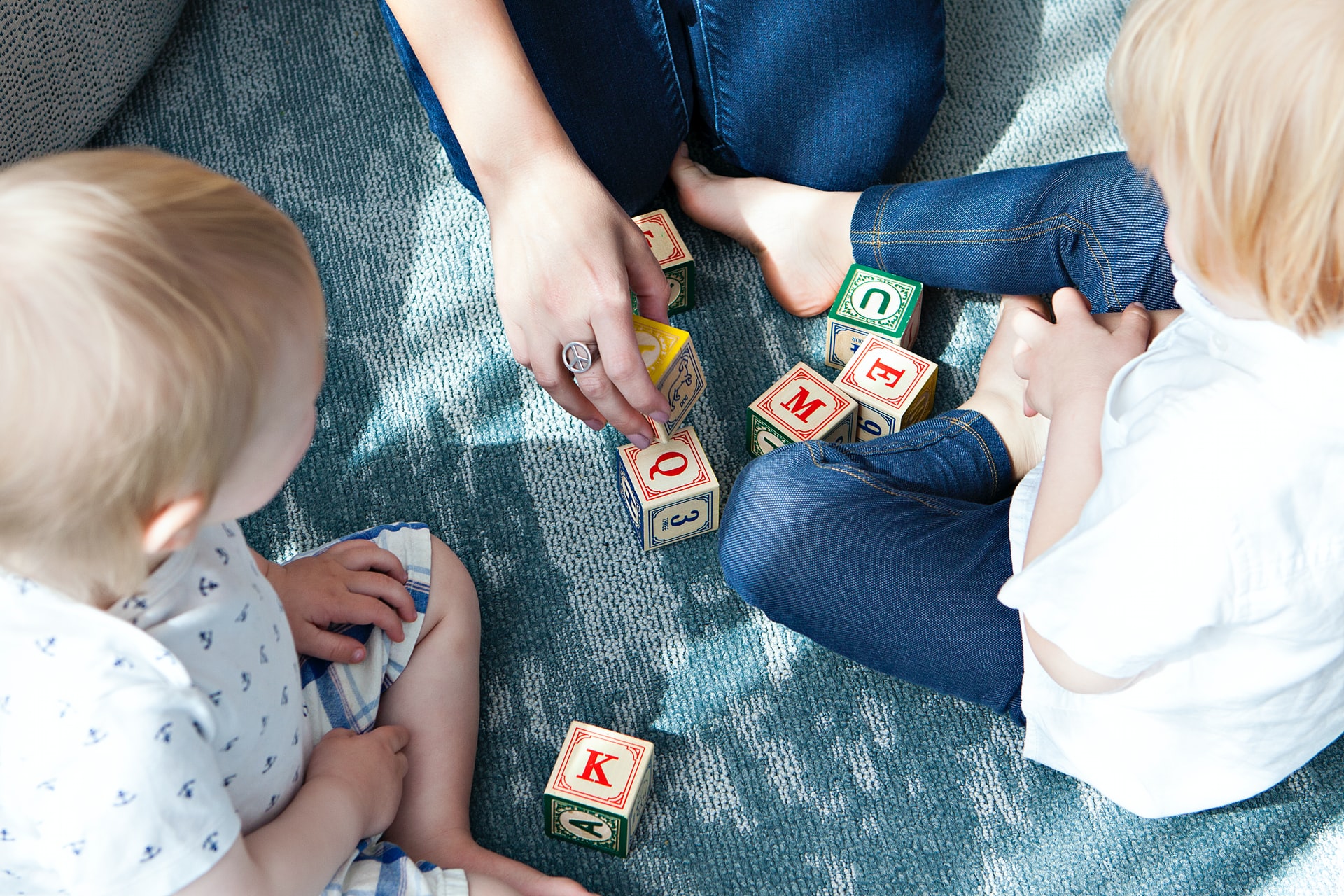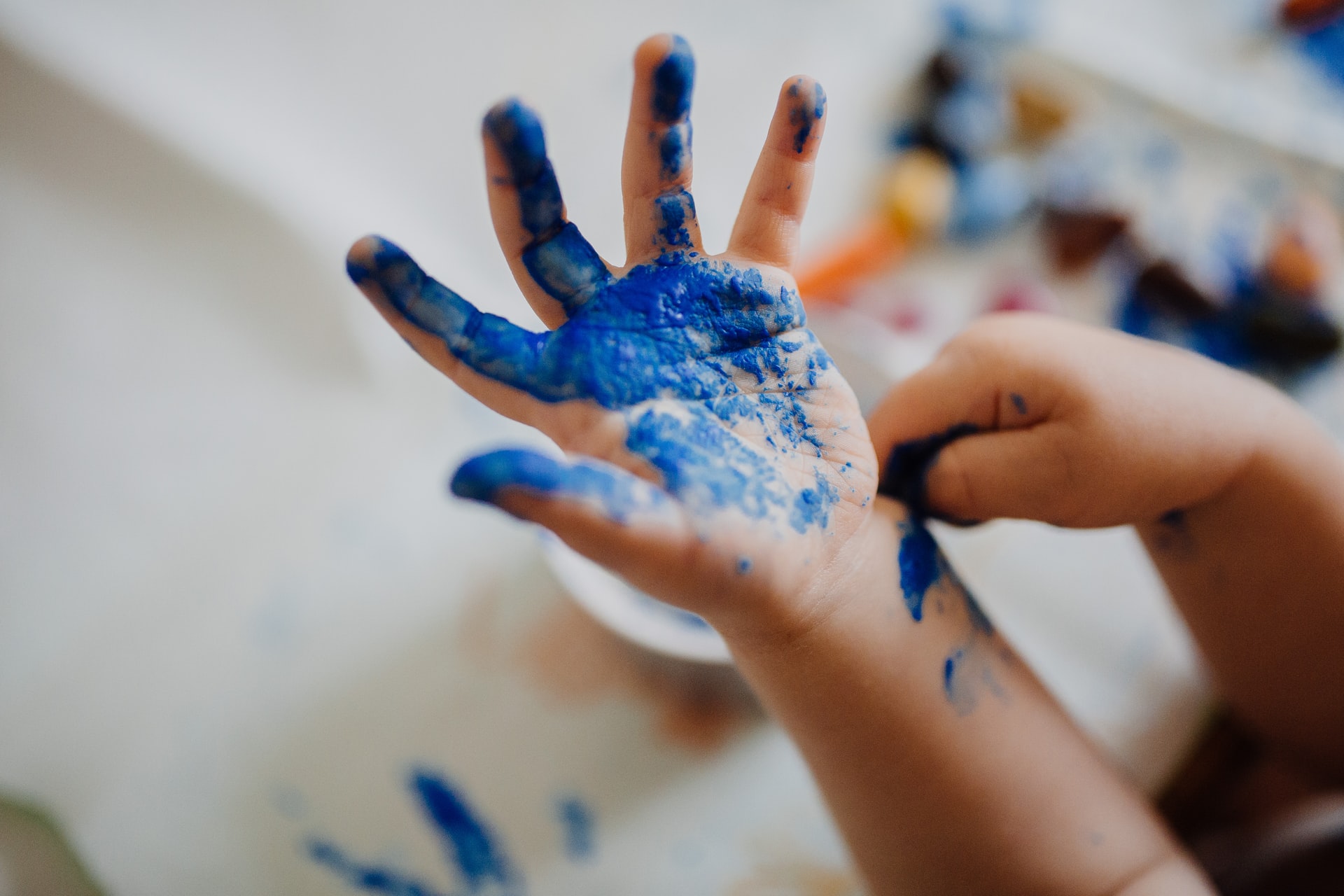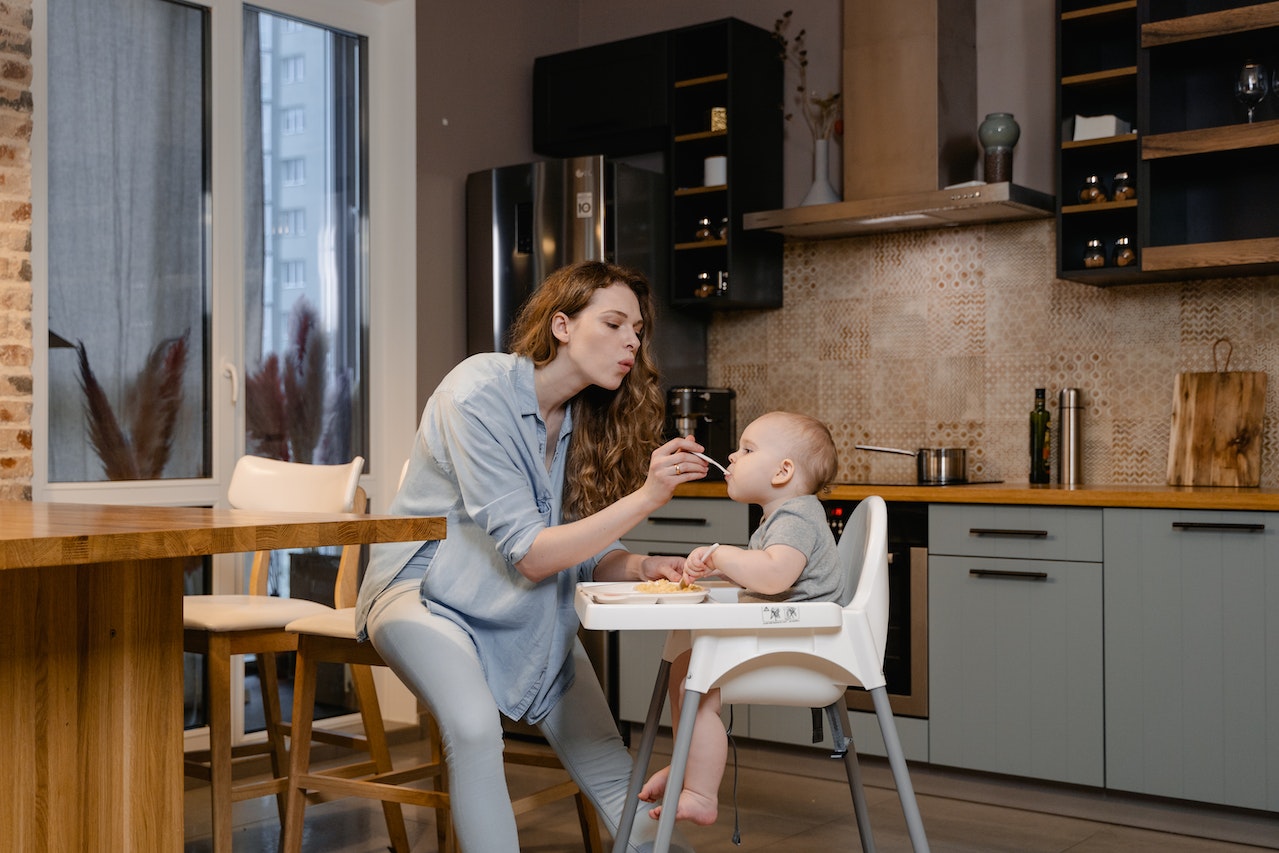Did you know creativity increases cognitive skills? Some kids’ activities can be underestimated and not be taken seriously, but simple things like playtime can significantly impact their development. That’s why we shouldn’t focus only on what they’re learning at school but on what we are doing at home to help them evolve better.
You can do many activities at home that can boost children’s development, like crafts, coding, learning exercises, sports, art, music, and even games like chess. That’s why we asked people, who are familiar with these topics, for their advice.
What is the secret to raising creative kids?
As parents of three young kids, we are very cognizant and helping our children grow their creativity. The secret to raising creative kids is to understand what creativity is. We live in a world of rules and freedom within the rules. The more rules, the less opportunity there is for creativity. To us, it’s important to limit the limits we put on our kids. It’s also important to have rules so they can grow to fit into society. We allow the kids to pursue their ideas and explain why it matters when they approach rules. This can be something as simple as why it matters to color in the lines. We don’t tell them why it matters. We ask them why it does. Then it’s up to them if they want to. Our 5-year-old son wanted to make a smoothie a few days ago. I let him pick the ingredients. He picked raspberries, an apple, broccoli, a lot of garlic, some cherry tomatoes, and some grapes. Most parents would have said no to the garlic and broccoli. I didn’t. I wanted him to evolve his recipe skills (or lack of!). I mean, why does it matter what he puts into a smoothie? It’s an arbitrary rule.
Greg from Cha Ching Queen
In what stages of child development are gross motor activities more important?
Gross motor activities are important at all ages of development. However, the first three years of life are considered the most important because they are responsible for building foundational skills that affect later years of gross and fine motor participation. During the first year of life, gross motor skills are built through the integration of reflexes. Developmental milestones such as rolling over, pushing up on arms, crawling, sitting, and standing are important to begin to develop upper body strength, hand strength, core stability, bilateral coordination, and visual-motor integration skills. During the second year of life, transitioning from sitting to standing, walking, running, jumping, throwing, and climbing all build stability, coordination, and locomotion skills necessary to navigate around the environment, engage in play, and engage in daily life activities. These combined skills lead to the child’s ability to engage in sports, school tasks, and everyday life activities.
Annie Tao from Always Keep Progressing
What are the benefits of coding for children?
Coding is one of the most essential skills in the 21st century. Starting early provides many benefits that enhance children’s educational progress and equip them with skills that contribute to their future success, not just in tech but in any other field.
Learning programming is one of the best ways to improve academic performance as it covers multiple disciplines, including mathematics, logic, writing, and creativity. Nonetheless, it can also teach that making mistakes is not a negative thing but rather an opportunity to learn and tackle a problem from a different perspective. As kids debug their codes and come up with better solutions, their confidence can also increase.
Besides academic help, coding strengthens prospects by providing important hard and soft skills. Coding allows children to understand the technical background of computers better and see how they become capable of performing different tasks. Moreover, since programming involves complex processes, it helps develop softcore skills such as communication, organization, patience, and critical thinking. These skills are relevant both in higher education and most jobs. Thus by developing them early, children can get a competitive advantage.
Dora from ImagiLabs

Why do you recommend DIY flowers with kids?
- It encourages creativity in children by letting them design their own flower arrangements
- It promotes parent-child bonding by spending quality time with your little ones with this unique bonding activity.
- It boosts self-confidence by completing the design successfully will give your kids a great sense of accomplishment.
Team Flower Station from Flower Station Dubai
What are some benefits of board and card games for children’s development?
Board and card games, often viewed as sources of entertainment, provide a treasure trove of developmental benefits for children.
Firstly, they enhance cognitive skills. Games like ‘Chess’ or ‘Scrabble’ cultivate strategic thinking and problem-solving. They act as cognitive gyms, where children flex their mental muscles to calculate moves or brainstorm word possibilities. Memory games, such as ‘Memory’ or ‘Old Maid,’ further improve recall ability and attention span.
Secondly, these games serve as excellent platforms to develop social skills. The turn-based nature of most games instills patience and the importance of fair play. More importantly, they promote communication and cooperation, especially in team-oriented games like ‘Pictionary’ or ‘Codenames.’
Additionally, many games incorporate educational elements. ‘Monopoly,’ for example, familiarizes children with basic financial concepts, while ‘Ticket to Ride’ introduces geography. Games are therefore playful mediums to absorb valuable knowledge.
On the emotional front, they help children handle success and defeat gracefully, fostering emotional resilience. Moreover, with colorful boards, engaging narratives, and imaginative scenarios, they spark creativity and enrich their imagination.
What are the benefits of chess for children?
While there exist tons of benefits of chess for children, there are 5 major aspects to this ancient strategy game that can truly help enhance a wide variety of integral skills in young people. Chess sharpens the mind in a myriad of ways, regardless of the age of the players. For children, however, many of these benefits can make a huge impact during childhood, and with regular play, the lasting impressions can reverberate throughout their adulthood.
- It improves math and reading skills
A ton of problem-solving goes into playing chess. And, the cognitive processes involved in the game are quite similar to the cognitive processes used in math and reading comprehension, such as analytical reasoning, decoding, and critical thinking. So while chess might seem unrelated to reading a book or solving a math problem, the benefits of playing extend into these areas and can offer improvements a child might not pick up in standard lessons.
- It improves the focusing ability
Children often have a very hard time focusing—and for good reason. The developing brain struggles with attention span and spatial reasoning and isn’t ideally suited for things like complicated instructions and long days in the classroom. By requiring intense focus and concentration, however, chess helps strengthen these skills and allows children to practice staying on task.
- It helps develop complex thought
Complex thinking depends on the ability to draw connections between different (and sometimes disparate) things, and this can be quite tough for young kids. Chess is a fantastic opportunity to practice complex thinking and to see the results of these connections in real-time, with forethought turning into very real and easily identifiable outcomes.
- It boosts creativity
Kids are inherently imaginative and creative, but they may not always know how to express it in productive ways. Because it requires original ideas and an exploration of various possibilities, chess works to improve creativity and help kids harness it for good.
- It encourages hard work
There’s no denying that chess is hard work. And for a kid who’s invested in the outcome of a game, that means learning to see the difficult task ahead and put in the work to achieve it. That’s a skill that many children don’t have a lot of incentive to learn elsewhere, and one that extends into many other areas of their life.
Neel Jain from Square Off
How does learning coding with legos for kids work?
Coding is the process of turning ideas and information into a language computers can use. These codes are often a series of patterns that represent letters, words, etc. Legos are an amazing manipulative to learn how to recognize, continue, and create patterns.
With Legos, kids can easily see their patterns, add to or change them, and create their own. It is a screen-free way to begin learning how one pattern can mean something else. Turning the learning process into a game with a toy kids already love is the perfect way to lay down the foundations for future coding skills.
Kim Cartwright from Team Cartwright
From what age would you recommend kids to start playing chess?
Chess is an intellectually challenging game that helps develop critical thinking skills and strategic reasoning. These skills are transferable to all aspects of life, including school, relationships, and careers.
I strongly advise children to start playing chess as soon as they can read and write. Children should be able to follow directions and, most importantly, want to learn how to play chess.
Gary Flores from Chess Delights
What is the best advice you would give parents to start exercising with their kids?
The best advice I could give parents to want to start exercising with their kids would be to remember that they are their parents and NOT their trainer or drill Sargent. So make sure that when you come up with a workout routine, you come up with some fun and innovative exercises that keep them engaged and motivated to want to continue working out with you. A great way to do that is to devise partner exercises, or you can make a competition and challenge out of the workout. For example, who can do the most squats in a minute? Remember, you are their parent, so you don’t want to push them to the point where they don’t want to continue working out with you. Keep it light and fun, and make a slow but gradual progression towards more challenging exercises.
Collin Gladys, M.A., M.S from Sunny Health & Fitness
What are the benefits of sports for children?
Studies and sports go hand in hand when it comes to the overall personality development of any child. Participation in sports is a must for the physical as well as mental well-being of your child. When a boy or a girl goes out and plays with friends, it helps in socialization. These activities obviously help the child to build a good physique. But it also teaches a child how to mix up with people, how to talk to them etc. Participation in sports teaches that winning is not everything and you learn more through defeat as compared to victories.
This participation will build his or her personality. It teaches you perseverance, social skills, teamwork, respect, leadership skills, and how you should keep going in challenging situations. For parent’s happiness who are more inclined towards studies, sports do help academically as it gets rid of any stress or anxiety related to studies. Thus a fresh mind automatically helps the child to have a good focus while studying. Some well-known benefits of sports are as follows:-
- Reduced risk of obesity
- Increased cardiovascular fitness
- Healthy growth
- Strengthens lungs
- Reduces blood sugar levels
- Regulates blood pressure
- Improves energy levels
- Improves coordination and balance
- Helps prevent cancer
- Improved sleep
- Reduces chronic muscular tension
- Creates happiness
Abhishek Sarki from KreedOn
What’s the most important thing to keep in mind when entertaining children?
We may be expected to drop a quote that is fun and carefree, but in all honesty, safety truly is the most important thing to keep in mind when entertaining children. And we’re not just saying this to win over the parents!
Not having safety concerns truly takes the stress out of the job so you can enjoy what you do to the fullest, and we know better than anyone that kids are highly intuitive. They can feel it when a person is faking it and their interest in an activity is ingenuine or they’re simply preoccupied with something else.
(On a side note, that’s also why job satisfaction is a major factor to take into account. It’s just impossible to do a good job entertaining kids if you don’t actually enjoy it yourself.)
That’s one perspective. But as any good teacher will tell you, you also need to make a child feel safe and secure so you could empower them and give them enough confidence to explore the world, even if you only took them to the park.
Another thing that’s truly important is to give kids a sense of familiarity even in an entirely new context. This goes for kids of all ages, from toddlers to preteens.
Why social-emotional activities are important for kids?
We as parents always have goals for our kids. The balance comes in focusing on goals that help guide our children to grow into well-rounded adults. That is the tough work of parenting! Not just the day-to-day moments but working with the long-term goals in mind. This is why focusing on social-emotional activities is just as important as academic and physical development.
Social-emotional learning takes place in the home, first. We lead our children in how to react to tough situations with our own actions. Then, at appropriate ages, we help our children learn to make friends and interact with peers. Being present and aware as a parent is the key here.
Even as my children grow into their teenage years, being aware of how they are interacting with friends, what they are talking about, and how they are processing relationship challenges is very much part of my job as their mom. Kids need us in all stages.
These social-emotional interactions build character, establish values, and lead to a well-rounded child that becomes a well-rounded adult. It is not just academic or physical development that we should be focusing on, but guiding our children through social-emotional situations and relationships as well.
Jaimi Erickson from The stay-at-home mom survival guide
What can parents expect from introducing children to chess?
Chess is a game that knows no age limits. That’s why there’s no specific age when a child should be introduced to it. While many students take up chess studies in first or second grade, kids as young as 3 and 4 years old are known to be outstanding chess players. Playing chess does not require any specific financial investments – the simplest chess set or even a phone app will suffice – and the benefits of the game for children are many:
Logical, analytical, and strategic thinking – The chess game requires the player to analyze the multifaceted situation on the chessboard and take into account all the effects each move entails. The player also needs to think ahead and make accurate predictions. All that presents a tremendously fruitful thinking exercise.
Social-emotional skills – Seeing another person’s perspective, learning to treat an opponent in a friendly and respectful manner, being patient to wait for one’s turn, as well as taking both victories and defeat humbly and gracefully – all those important skills come to a child naturally in the course of chess practice. Also, the evident changes in the situation on the board that happen after each move teach children about responsibility.
Discipline and concentration – Persistence and deep focus in chess are key. Those are invaluable skills for a student, especially in our modern age of endless distractions. The great thing about chess is that a child acquires those skills without much effort – thanks to the huge emotional gratification each time they succeed to pull out a tactic, win some material, or the entire game.
Problem-solving – Chess is a fantastic playground for honing youngsters’ problem-solving skills. At each moment of the game, the player has to evaluate the situation, come up with possible solutions, and choose a decision they consider the most effective.
Other things a parent might expect when their child engages in chess, are overall academic progress, better time management skills, and stronger confidence.
Alesya Sharipova from Kid’s Academy
What are the benefits of STEM for kids?
STEAM is about sparking learning with hands-on activities and allowing the freedom of creativity in often rigidly hard science fields. That’s why it comes with a lot of benefits for children.
- Encourages independent thinking. Kids are given room to think, evaluate, and determine how to achieve their goals and complete projects best. The results are not to be measured simply by success or failure; instead, it’s the way of thinking that they learned while completing the projects that matter most.
- Interdisciplinary approach. A STEAM-centered education is driven by a cross-disciplinary emphasis, exposing learners to multiple, lateral ways of thinking.
- It is project-based learning. When working on projects specific to what issues appeal to them, they are encouraged to decide on a goal and choose which skills they want to explore the achieve it, allowing them to discover and experiment with various methods.
- It helps develop problem-solving skills, critical thinking, and creativity.
- It’s beneficial for mental, emotional, and physical well-being.
We believe that getting kids involved in creative, science-based learning at home can translate into a deeper interest in these subjects in the classroom.
Penny Bauder from Green Kid Crafts
What are the benefits of storytelling with crafts for kids?
The language of children is storytelling. It helps them navigate and make sense of the world while engaging their curiosity and imagination. Perhaps most importantly, storytelling cultivates a sense of wonder and joy. Hands-on activities can enhance the benefits of storytelling by supporting fine motor development, activating children’s senses, and engaging more neural pathways. Crafts like storytelling cards, felt “storyboards,” and other crafts make storytelling even more fun!
Jessica Pounds from Sparkle Stories
How to set up a drone obstacle course with Hula Hoops?
One of our favorite ideas for a DIY drone course is using hula hoops. Hula hoops are generally already available at most schools and, if not, can be purchased at a local store for relatively cheap. Using a small string and tape, the hoops can be hung from the ceiling at different heights and distances to create a track. If you want to get fancy, try throwing some LED lights on the outside of the rings.
David Erath from DroneBlocks
How can parents bond with their kids through crafts?
As a mother of five, I get so overwhelmed with my day-to-day that I forget to take a moment to stop and actually spend time with my kids. That’s why we really enjoy doing crafts together. It’s the perfect way to connect while doing something fun together. Plus, it helps my kids emotionally. When I sit down and give them individual attention, that tells them, “My mom loves me. I matter.” Crafting also encourages creativity and allows my kids to try new things in a safe environment. From water bottle rockets to shrinky dinks, we’ve made a lot of memories crafting together as a family, and it’s something I hope we continue to do for years to come.
Marie Loveless from MySillySquirts.com
What are some outdoor activities that promote children’s creativity?
Getting your kids interested in outdoor activities can boost your children’s creativity. Here are some activities that promote imagination and self-expression:
- Seed Bombs: Create colorful seed bombs by mixing clay, compost, and wildflower seeds. Roll them into small balls, let them dry, and then toss them in your garden or a nearby open area. When it rains, the seed bombs will dissolve, and flowers will sprout.
- Herb Planters: Decorate small tin cans or plant pots with paint, stickers, or markers. Fill them with soil and plant herb seeds. Kids can learn about different herbs and their uses and enjoy watching their plants grow.
- Garden Markers: Make unique garden markers using rocks and paint. Collect smooth stones and paint them with bright colors. Once they dry, use them to label different plants in your garden, adding a personal touch.
- Fairy Houses: Encourage your child’s imagination by constructing beautiful fairy houses. Gather twigs, leaves, and pebbles to create miniature houses. Let your child decorate them with natural materials, creating a magical spot in your garden.
- Butterfly Feeders: Attract butterflies to your garden by making butterfly feeders. Cut a sponge into small pieces and place them in a shallow dish. Pour a mixture of sugar water onto the sponge, and watch as butterflies come to feed.
- Nature Collages: Take a nature walk and collect various natural materials like leaves, flowers, and feathers. Back at home, provide a piece of cardboard or paper and glue. Kids can create beautiful collages by arranging and gluing the items they collect.
These activities promote creativity, learning about plants and nature, and provide hands-on experiences for kids during the summer. They can also cultivate an appreciation for gardening and the environment while enjoying quality time outdoors.
Children are the future. Why shouldn’t we concentrate on their development? We don’t need to focus on just keeping them busy. Instead, we should put our attention on how to help them grow in a better way at home. Parenting plays a crucial role in shaping their future, and by actively engaging with your kids at home while they learn, you can make the journey more enriching and rewarding for both you and them.




